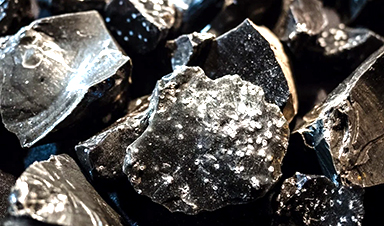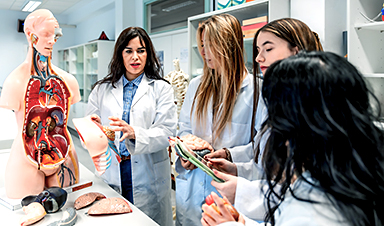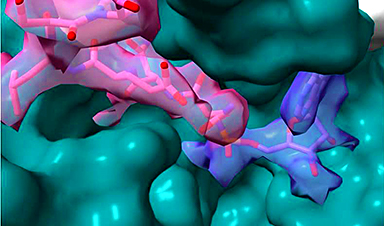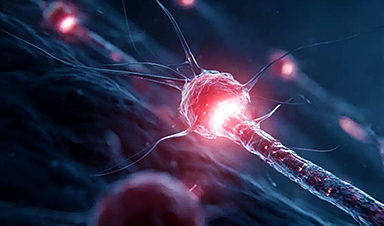Graphene is a multifunctional carbon nanomaterial widely synthesized for its applications in composites, energy storage, and sensors.
Although previous reviews mentioned that achieving an increased yield compromises graphene quality, limiting its commercialization, recent research on graphene highlighted the use of naturally abundant carbonaceous sources for the cost-effective production of graphene derivatives.
An article published in the journal Energy and Fuels discussed the recent advances in high-quality graphene synthesis from various naturally available carbonaceous materials with a glimpse of their potential scalability for commercialization. Moreover, previously reported synthetic strategies were explored to determine the most suitable technique to obtain high-quality graphene derivatives with good yield.
The application of graphene derivatives in the energy sector was also discussed, highlighting their importance for energy storage. The present review summarized the current scenario in graphene production and provided an insight into their cost-efficient production with high purity.
Graphene and Graphite
Among various carbon materials, graphene stands as an advanced carbonaceous material. Moreover, its high functionality is due to its distinct two-dimensional (2D) polymeric structure consisting of covalently bonded carbon atoms with sp2 hybridization, organized in a hexagonal lattice structure.
Moreover, the delocalized π-electrons present in the aromatic ring of graphene contribute to the improved thermal and electrical conductivity, tensile strength, high stiffness, high specific surface area, impermeability, and higher optical transparency, making graphene an important and cost-effective carbonaceous material for industrial applications.
Graphite is one of the reliable raw materials for graphene synthesis and has close structural similarity with it.
Coal for Graphene Derivatives
Coal is formed due to the natural coalification process and is popularly used to produce electrical energy. The three-dimensional framework of coal is composed of various inorganic and organic materials forming a complex heterogeneous mixture. Coal’s organic domains constitute aromatic/hydroaromatic and aliphatic carbon ring structures interconnected via aliphatic/ether linkages. On the other hand, the inorganic counterparts contain the constituents of sulfates, clays, silicates, carbonates, pyrites, and free minerals.
The aromatic/hydroaromatic/heterocyclic polycondensed carbon rings in coal, connected via the ether, methylene, and aromatic carbon-carbon linkages, form a fascinating organic framework within its structural matrix.
Anthracite coal has a high degree of coalification with several sp2 hybridized carbon microcrocrystals. The previously reported taixi anthracite was prepared from coal, wherein the raw coal was initially converted into graphite-like carbon material via graphitization at 2400 degrees Celsius for two hours and in the presence of iron (III) sulfate (Fe2(SO4)3) as a catalyst. Later the graphite-like carbon material was oxidized into graphite-like carbon oxides via the Hummers’ method.
On the other hand, bituminous coal, synthesized as raw material for coal-derived graphene films, involved initial electrolysis followed by a chemical vapor deposition (CVD) process. During the electrolysis, a coal electrolytic cell was used with a 4-molar concentration of sulfuric acid as an electrolyte.
40 millimolar iron (II) sulfate heptahydrate and 40 millimolar Fe2(SO4)3 were used as a source for iron ions alongside the addition of coal to the anodic solution. Later, the obtained coal char was treated with electrolysis treated with the CVD system.
Low-Cost Carbonaceous Precursor (LCP) and Biomass for Graphene Derivatives
Biomass-based materials are widely used as graphene precursors due to their structural and chemical favorability, facile operation, and low cost. A previous report mentioned peanut shells as agricultural waste biomass to synthesize few-layered graphene via probe sonication. Other biosources like grass and cockroach legs were also reported as precursors to obtaining monolayered graphene derivatives of high quality.
The LCP-based material serves as raw material for the high-scale production of low-cost graphene with optimal quality. The advantages of high yield and scalability of the LCP-based graphene derivatives enable their applicability in sensors, energy storage, water treatment, and catalysis. Since graphene is widely used in energy storage devices as electrode material, LCP-based graphene derivatives can meet the need for high-quality, low-cost graphene required for fabricating energy storage devices.
Conclusion
To summarize, naturally abundant, low-cost carbonaceous material was found to be an affordable and suitable source to produce commercial graphene. Graphene derivatives based on LCP showed excellent electrochemical properties for their energy storage applications. Despite the importance of graphite as a commercialized graphene precursor, low-cost carbon materials like coal fulfill the need for a cost-effective high-quality graphene derivative obtained commercially.
Additionally, the raw material and the synthetic methodology used in graphene synthesis highly impact the graphene characteristics. The LCP feedstock can serve as an efficient alternate precursor to coal for largescale commercialization of graphene derivatives economically.
News
New Once-a-Week Shot Promises Life-Changing Relief for Parkinson’s Patients
A once-a-week shot from Australian scientists could spare people with Parkinson’s the grind of taking pills several times a day. The tiny, biodegradable gel sits under the skin and releases steady doses of two [...]
Weekly injectable drug offers hope for Parkinson’s patients
A new weekly injectable drug could transform the lives of more than eight million people living with Parkinson's disease, potentially replacing the need for multiple daily tablets. Scientists from the University of South Australia [...]
Most Plastic in the Ocean Is Invisible—And Deadly
Nanoplastics—particles smaller than a human hair—can pass through cell walls and enter the food web. New research suggest 27 million metric tons of nanoplastics are spread across just the top layer of the North [...]
Repurposed drugs could calm the immune system’s response to nanomedicine
An international study led by researchers at the University of Colorado Anschutz Medical Campus has identified a promising strategy to enhance the safety of nanomedicines, advanced therapies often used in cancer and vaccine treatments, [...]
Nano-Enhanced Hydrogel Strategies for Cartilage Repair
A recent article in Engineering describes the development of a protein-based nanocomposite hydrogel designed to deliver two therapeutic agents—dexamethasone (Dex) and kartogenin (KGN)—to support cartilage repair. The hydrogel is engineered to modulate immune responses and promote [...]
New Cancer Drug Blocks Tumors Without Debilitating Side Effects
A new drug targets RAS-PI3Kα pathways without harmful side effects. It was developed using high-performance computing and AI. A new cancer drug candidate, developed through a collaboration between Lawrence Livermore National Laboratory (LLNL), BridgeBio Oncology [...]
Scientists Are Pretty Close to Replicating the First Thing That Ever Lived
For 400 million years, a leading hypothesis claims, Earth was an “RNA World,” meaning that life must’ve first replicated from RNA before the arrival of proteins and DNA. Unfortunately, scientists have failed to find [...]
Why ‘Peniaphobia’ Is Exploding Among Young People (And Why We Should Be Concerned)
An insidious illness is taking hold among a growing proportion of young people. Little known to the general public, peniaphobia—the fear of becoming poor—is gaining ground among teens and young adults. Discover the causes [...]
Team finds flawed data in recent study relevant to coronavirus antiviral development
The COVID pandemic illustrated how urgently we need antiviral medications capable of treating coronavirus infections. To aid this effort, researchers quickly homed in on part of SARS-CoV-2's molecular structure known as the NiRAN domain—an [...]
Drug-Coated Neural Implants Reduce Immune Rejection
Summary: A new study shows that coating neural prosthetic implants with the anti-inflammatory drug dexamethasone helps reduce the body’s immune response and scar tissue formation. This strategy enhances the long-term performance and stability of electrodes [...]
Scientists discover cancer-fighting bacteria that ‘soak up’ forever chemicals in the body
A family of healthy bacteria may help 'soak up' toxic forever chemicals in the body, warding off their cancerous effects. Forever chemicals, also known as PFAS (per- and polyfluoroalkyl substances), are toxic chemicals that [...]
Johns Hopkins Researchers Uncover a New Way To Kill Cancer Cells
A new study reveals that blocking ribosomal RNA production rewires cancer cell behavior and could help treat genetically unstable tumors. Researchers at the Johns Hopkins Kimmel Cancer Center and the Department of Radiation Oncology and Molecular [...]
AI matches doctors in mapping lung tumors for radiation therapy
In radiation therapy, precision can save lives. Oncologists must carefully map the size and location of a tumor before delivering high-dose radiation to destroy cancer cells while sparing healthy tissue. But this process, called [...]
Scientists Finally “See” Key Protein That Controls Inflammation
Researchers used advanced microscopy to uncover important protein structures. For the first time, two important protein structures in the human body are being visualized, thanks in part to cutting-edge technology at the University of [...]
AI tool detects 9 types of dementia from a single brain scan
Mayo Clinic researchers have developed a new artificial intelligence (AI) tool that helps clinicians identify brain activity patterns linked to nine types of dementia, including Alzheimer's disease, using a single, widely available scan—a transformative [...]
Is plastic packaging putting more than just food on your plate?
New research reveals that common food packaging and utensils can shed microscopic plastics into our food, prompting urgent calls for stricter testing and updated regulations to protect public health. Beyond microplastics: The analysis intentionally [...]





















